To coninue down Chile, we returned our rental car in Puerto Montt and prepared to board the Navimag Ferry for 3 nights arriving in Puerto Natales late on the 4th day. The cabin was adequate; this wasn’t billed as a “cruise,” just transportation; the food plentiful, but not something to write home about. There was a naturalist who pointed out whales, and gave a couple of talks on the area we were passing through. Parts of it reminded me of the fjords in New Zealand (I haven’t been to Scandinavia). Beautiful, somewhat eerie, cliffs and mountainsides often draped with waterfalls, and later into the trip some high up glaciers with their classic blue ice, due to the compression of the snow and loss of air. Lots of black-browed albatross, a variety of cormorant species, flightless ducks, dolphins, sea lions, the periodic whale–mostly humpbacks, and not very close. However we saw one blue whale, a first for me. We stopped at Puerto Eden briefly, but only to pass supplies on to their small boats, take on a couple of their people for errands in Puerto Natales, and produce and items they wanted to sell there. From a distance, it appeared to be misnamed.
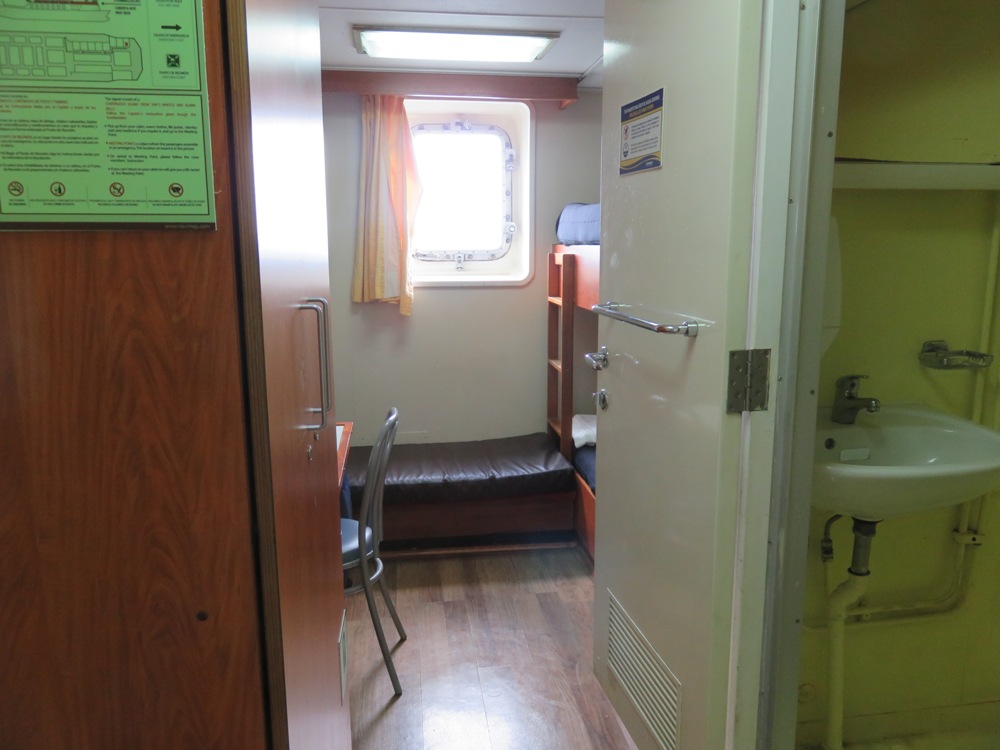
Our cabin on the Navimag Ferry.
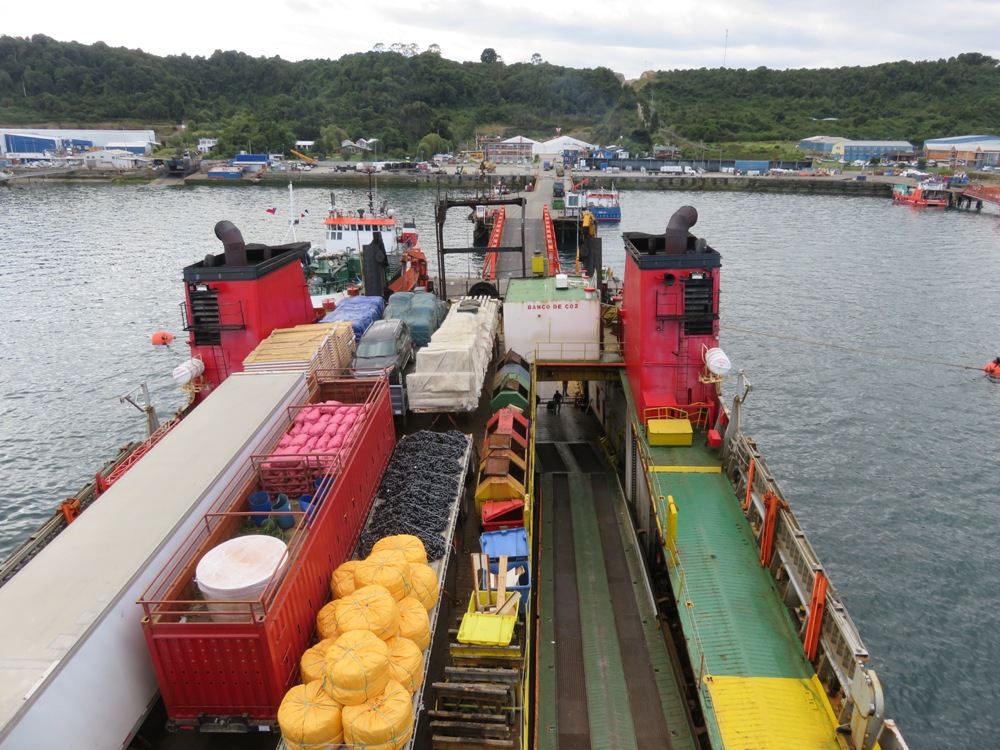
The cargo end of the ferry.
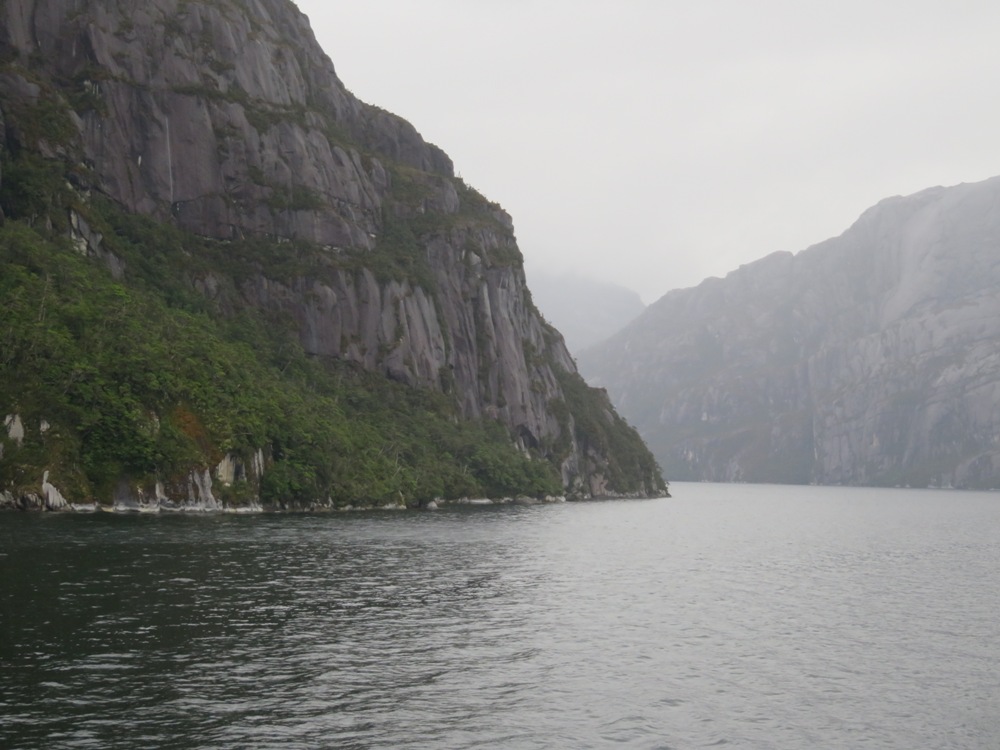
Fjord-like passage.
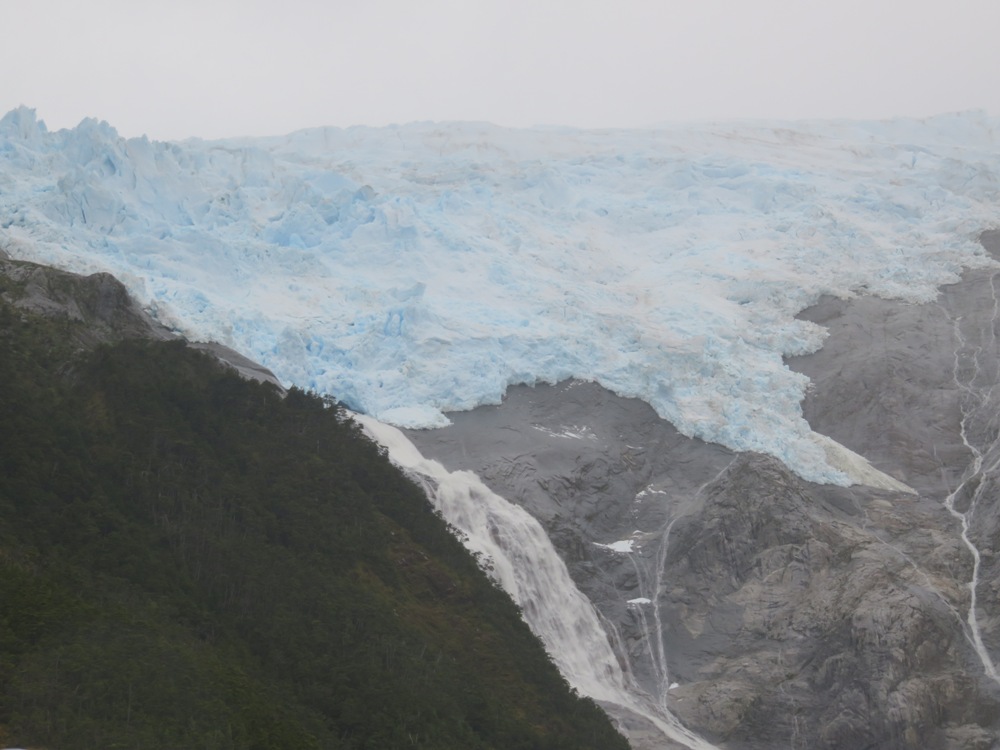
One of the melting glaciers along the way.
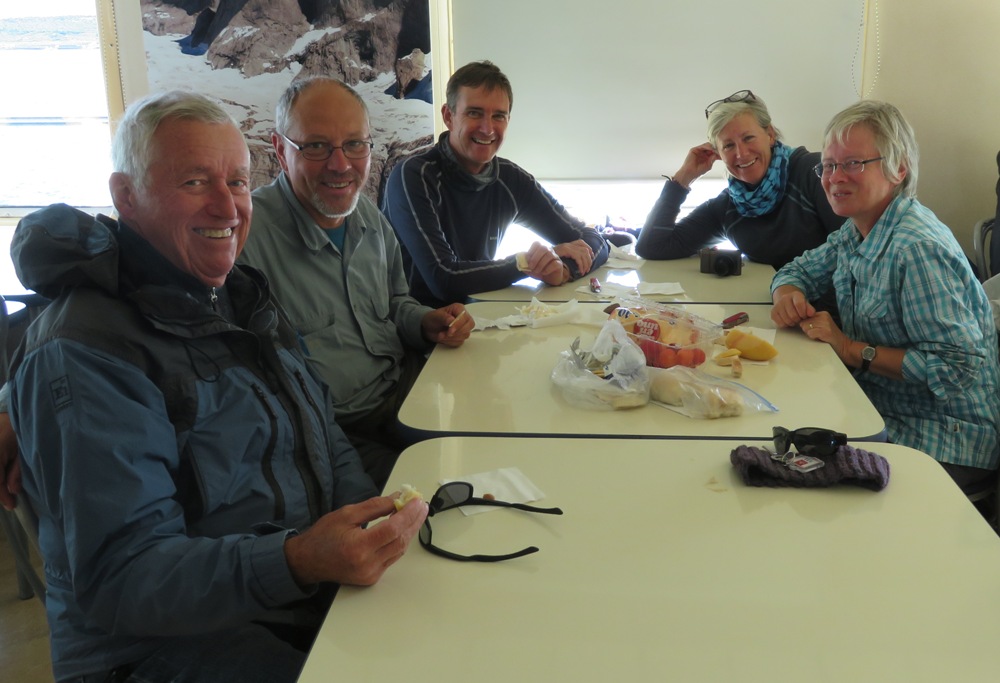
Friends from Belgium and the US met on the ferry.
Our disembarkation in Puerto Natales was a comedy of errors, only it wasn’t funny then, just cold, tiring, and long. The only saving grace, at least at first, were the black-necked swans. Passengers’ large suitcases were carried down to the cargo deck, then we stood in line for almost 2 hours until they got enough vehicles off to lower the gangplank, but it was such a long wait, they actually had us start down a winding staircase, walk across a work area without proper light (surprisingly no one fell or tripped) and get off where the trucks were unloading. We were so late in arriving that the rental car office and the estancia office where we had to check in for our stay at Torres del Paine were long closed, so we found a hotel, dug out one of our bottles of Chilean wine, warmed up, and went to bed.
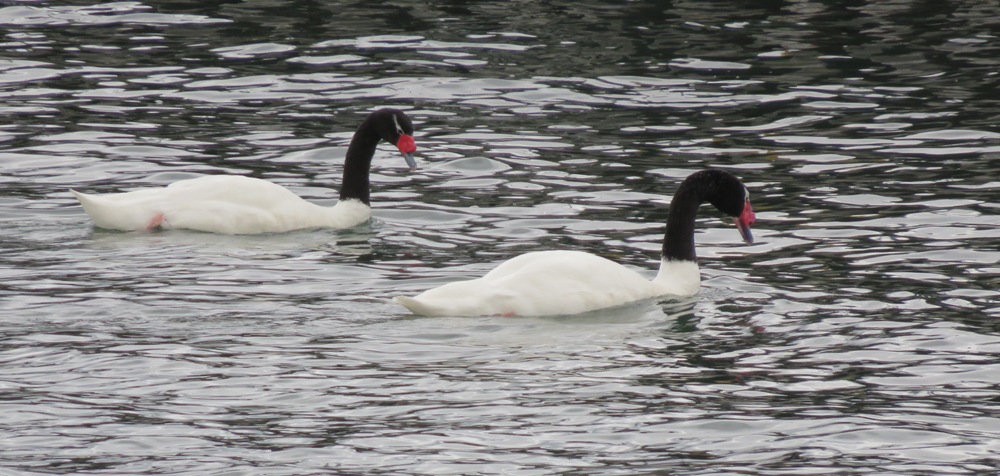
Puerto Natales’s black-necked swans.
The next day we got the rental car, final directions for the estancia, and took off. The estancia where we stayed is a working sheep ranch that has facilities for guests, and a reasonable drive outside the park. We saw the Torres from our bedroom window every day. The next two days, we drove to the park, did some sightseeing via driving around, took some hikes, and felt we got a good sense of it without doing the famous W trek, which takes several days. We definitely liked the less visited areas best. The main area where most people go by the hotel is not terribly attractive or pleasant with so many there. One morning there was new snow on the peaks, so we were quite happy to be in a room and not camping out. In the park we saw guanacos, flamingos, upland geese, and a variety of other birds. We found one lake and great hike with good views and we were the only ones on the trail that went up, and when we walked around the lake, there were only 3 or 4 other people. The views were just as good there as anywhere else we saw.
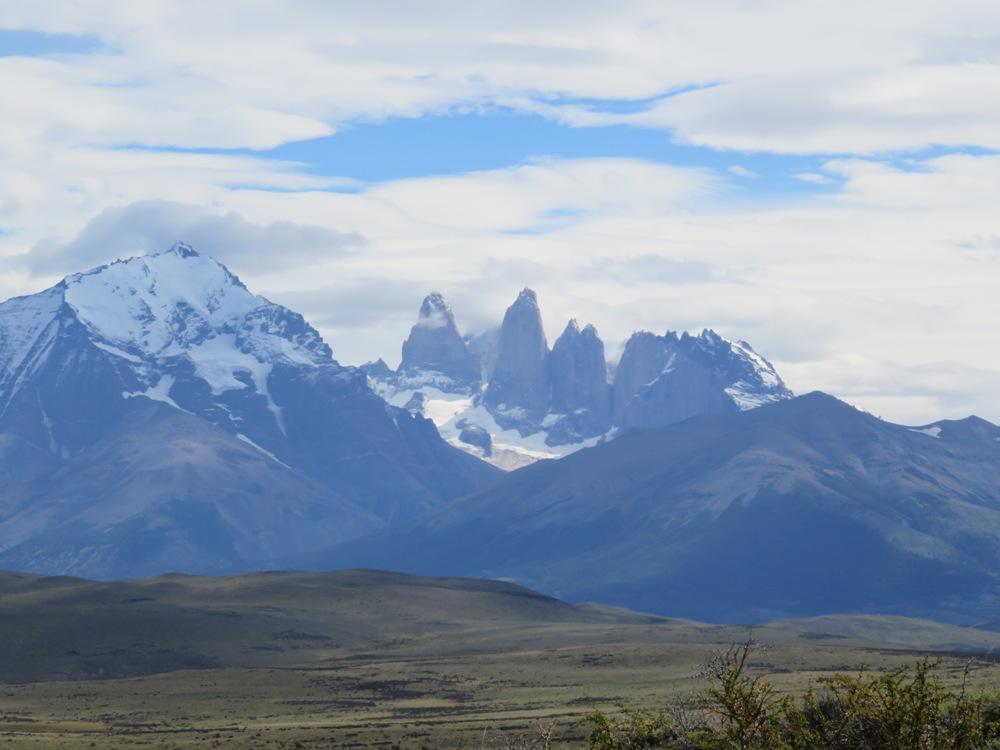
The iconic Torres.

Guanacos and vista of steppe.
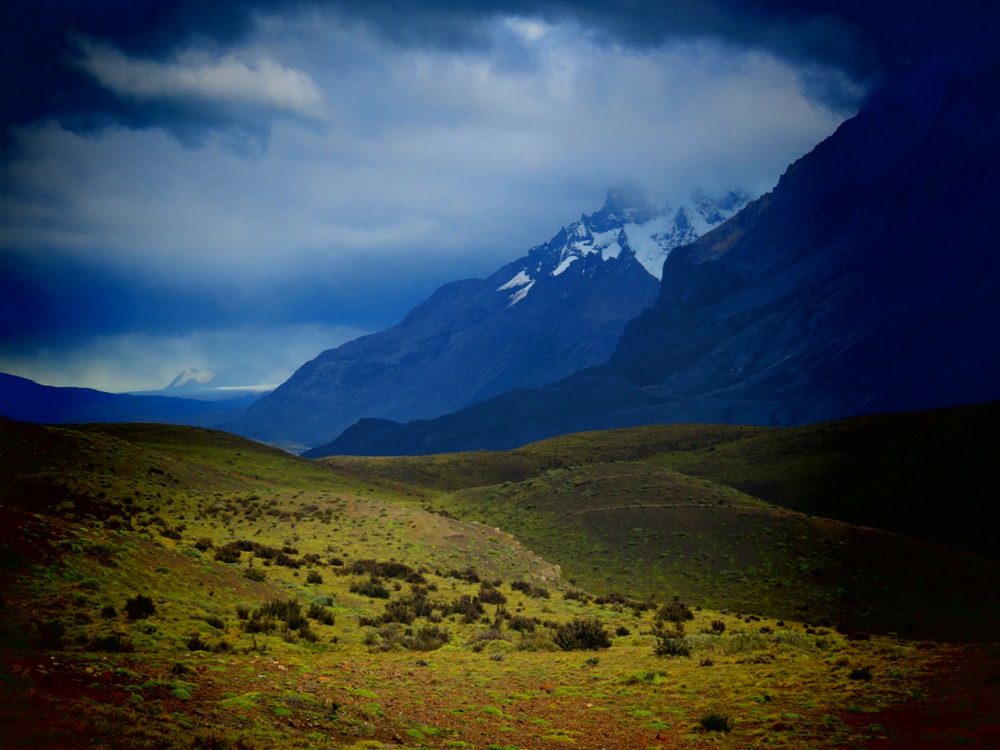
Another view of Torres del Paine National Park.
It is a place dominated by rock: cliffs, pinnacles, the Torres themselves, of course, sheer mountainsides, but also water with glacial lakes, powerful rapids and cascades, a few waterfalls.

One of several powerful cascades.
The Patagonian steppe looks like rolling hills with lots of tough, short, thorny plants and periodically the ubiquitous herds of sheep. Driving in to the estancia we would see Lesser Rhea usually running down the road in front of us, an occasional fox, a crested caracara that acted like a turkey vulture, and the very talented, hard-working sheep dogs doing their job. Somehow I expected it to look wilder, and it certainly is rather barren and encompasses a lot of space in which it rolls across quite successfully.

The Patagonian steppe.
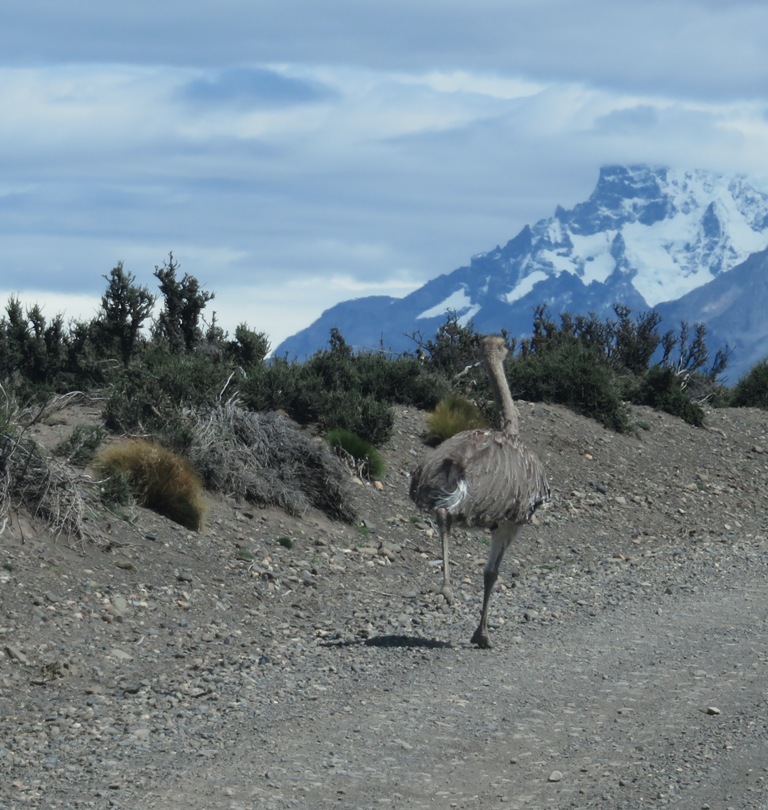
Classic view of the Lesser Rhea.
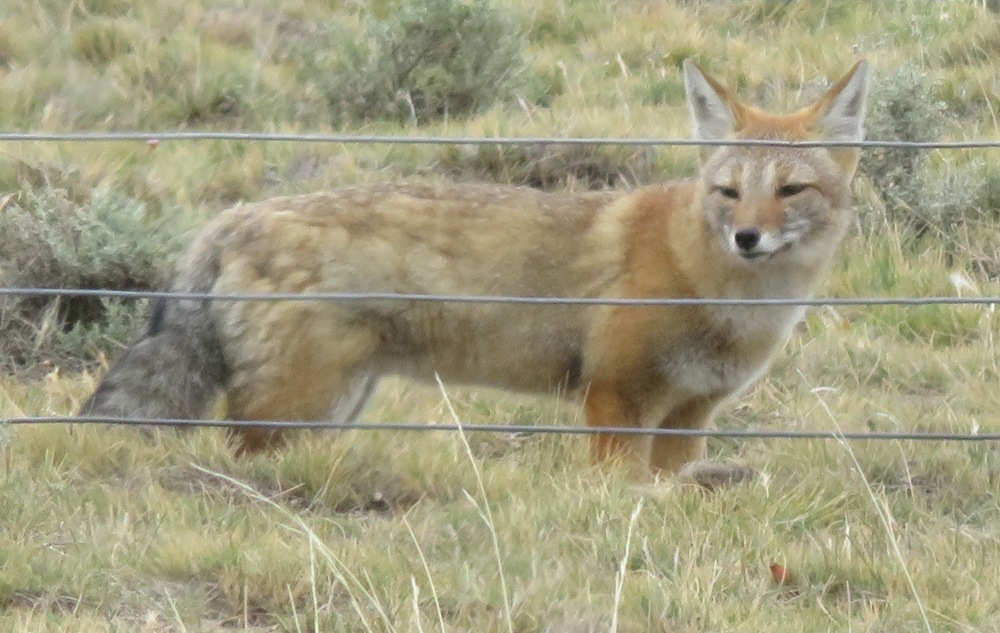
Red fox.
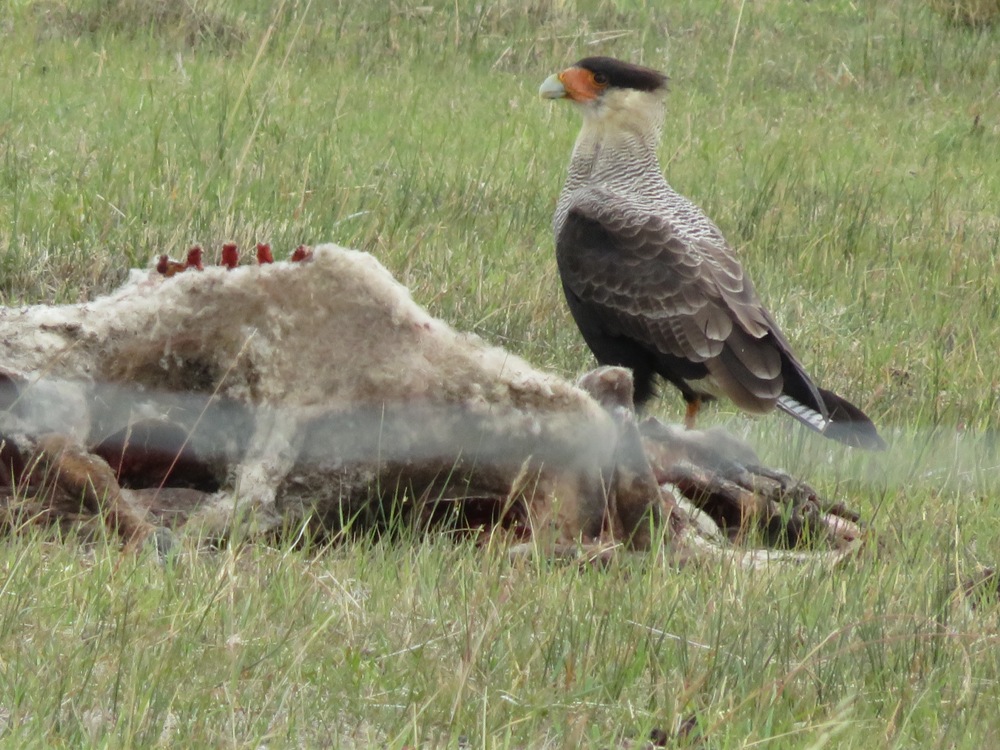
Crested caracara doing clean-up.

Working sheep dogs.
